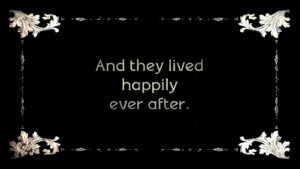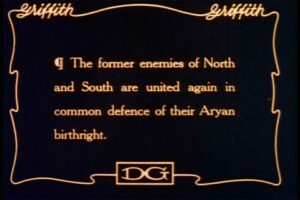Silent film – History of Film Subtitling

One of the distinctive features of silent film is the use of subtitles, which played very important functions: they provided a commentary on the action, set the events in a specific time-space, and reflected the dialogues of the characters.
The history of silent cinema is not only the history of great stars and directors, but also of film subtitling. Interestingly, the subtitle did not appear in the cinema right away. The first film screenings took only a few minutes, and it was only at the beginning of the 20th century that subtitles were introduced to the screens in addition to the commentators employed in the cinemas to tell the story. At first these were only the titles and subtitles of individual scenes, such as The Arrest of Dreyfus. The image, together with the text, then formed something like an illustrated book with moving pictures. Inserted subtitles had a narrative character, as they guided the entire action of the film, and an informative one – as they placed the events in a specific time, e.g. “The next day….”
Film subtitles – history
On a larger scale, the role of subtitling in silent cinema was used by David Griffith. This is because it was only after the invention of editing of individual scenes that it became possible to meld the subtitle with the image. Subtitles then appeared, and in addition, the very function of the written text changed. It no longer so much guided the plot, but was an integral commentary, so to speak, blended into the fabric of the film. Among the most famous film subtitlers of silent cinema were Gerald Duffy and Ralph Spence.
Very soon the role of film captioning grew to the point that their authors were not only lavishly rewarded for their work, but also felt they were the “poets” of the screen. Text written in film became overly ornate and elaborate. Even the simplest statement of fact aspired to the status of a timeless metaphor. Instead of the colloquial statement “It’s been a night,” for example, the film featured a caption that read: “And behold, the sweet-headed heralds of a new day have chased away the gloomy darkness of the night…”.
Silent cinema – a play on uncensored words

Also connected with the history of film subtitling is a very funny and at the same time interesting episode of cinema, namely the use of curse words by actors. It turns out that many silent movie stars of the time entertained themselves during the filming of individual scenes by uttering issues that were far from the official language. In a word, actors often simply cursed, knowing that their words would not be heard off the screen anyway. However, the whole thing seemed to come to a head when viewers learned to read issues from lip movements. In such cases, the caption was meant to distract attention from uncomfortable incidents. Viewers, however, quickly came up with a game called the “cuss word puzzle,” or “guess the curses.”
The fusion of image and filmic inscription during the silent cinema period was so strong that for a long time it was impossible to imagine the possibility of departing from this state. Subtitling, clearly referring to the traditional narrative of the novel, provided a bridge between film and writing. Meanwhile, the abandonment of subtitling in cinema after the sound breakthrough irrevocably violated this link. It meant that film moved closer to reality, becoming an almost perfect illusion of it.
Today, therefore, the film subtitle is a clear attribute of silent cinema, a call sign, as it were, pointing to a particular bygone era. For this reason, it now takes on sentimental value. Contemporary directors who sometimes reach for this means of expression, such as Lars von Trier, not only allude to the past through subtitles, but also emphasize the conventionality of the world depicted in the film. With the help of subtitling, a departure from the literalness of the image is also made, and reality returns to the culture of the Word.
